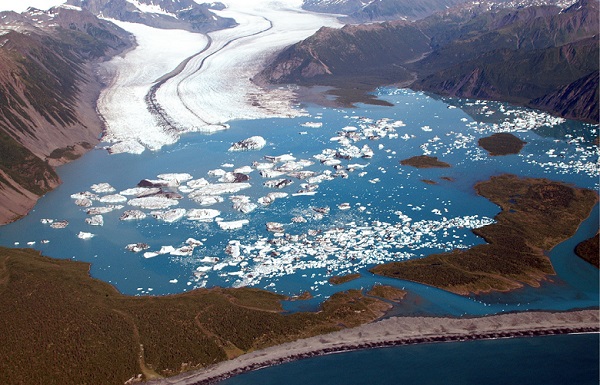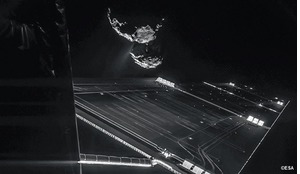In a sense, philosophy of science - if science is understood as a process that will generate knowledge of our surrounding world and of ourselves - is as old as philosophy itself. Both Plato and Aristotle dealt with the problem of knowledge. Mathematical knowledge, because of its inherent certainty (who can doubt that 2 + 2 = 4?), became the model. But in another sense one must wait until science itself became an identifiable part of society.
Take, as an example, Isaac Newton who no doubt many would describe as a physicist or an astronomer. The title however of his 1687 magnum opus is Principia Mathematica Philosophiae Naturalis or Mathematical Principles of Natural Philosophy, not of nature. One has to wait until (roughly) the 19th century to see science clearly described as something separate from philosophy, from theology and other religious matters, and from politics. It is the time, 1834 to be precise, when William Whewell, allegedly, proposed to introduce the term ‘scientist’, to have a term comparable to ‘artist’.
Once the scientific undertaking became clearly identifiable, philosophers asked both methodological and systematic questions about scientific disciplines. Roughly speaking, up to the beginning of the 20th century, their attention was typically drawn, almost exclusively, to the scientific output. They analysed scientific theories and what predictions can be made, based on such theories and how theories change from one period to another.
The scientific process itself - ie, how one arrives at such theories - was largely ignored. This only changed when Thomas Kuhn published in 1962 his famous The Structure of Scientific Revolutions. Although the complete scientific process was studied, it was still mostly an internal approach. External factors were usually not taken into account. This only happened when, among others, Robert K. Merton published in 1973 his Sociology of Science, linking science to such as economy and politics (and, perhaps surprisingly, to protestant ethics). Thus the field of social studies of science was created.
 Climate change - an oblique aerial photograph showing the terminus of Bear Glacier, Kenai Mountains, Kenai Fjords National Park, Alaska, which is under continuous retreat
Climate change - an oblique aerial photograph showing the terminus of Bear Glacier, Kenai Mountains, Kenai Fjords National Park, Alaska, which is under continuous retreat
The first thing is to go immediately for the ‘bigger’ picture. From what network of events is this particular event a part?
By now philosophy of science sees science as part of society with both internal and external dynamics. This is most clearly visible in the most recent development in the domain, namely the study of scientific practices. An excellent reader is the 1992 book Science as Practice and Culture, edited by one of the leading figures, Andrew Pickering. Why are practices so interesting? The reasons are plentiful and I list some of them:
- Practices have a material aspect: it involves scientific instruments that need to be manufactured, maintained and improved, it involves performing experiments and their registration, it involves computing on often dedicated machines. The prototypical example is of course the laboratory.
- Practices are related to learning: a famous distinction made in philosophy is between ‘knowing that’ and ‘knowing how’. ‘Knowing that’ is the theoretical notion of knowledge, as embodied in scientific theories and ‘knowing how’ involves both explicit and implicit (or ‘tacit’) knowledge. Furthermore it opens the possibility of learning ‘by doing’. The classic example is learning how to ride a bike. Maintaining one’s balance is not something that needs to be told but has to be experienced, very much like the skilled driver who is no longer capable of explaining what it is he or she is doing.
- Practices have a social nature: from the two characteristics above it follows immediately that a laboratory requires more than one researcher and that the learning process presupposes at least two persons, the learner and the teacher. Enlarging the scale, laboratories can become entire companies on their own - the Large Hadron Collider (LHC) at Geneva being the perfect example - and one-to-one teaching transforms into universities and research departments, public and private.
- Practices are easily linked to other practices: if one sees economical processes primarily as economical practices such as bargaining, negotiating, setting up enterprises, checking balances and so forth then not only the comparison but also the interplay of such practices with scientific practices are almost straightforward. Needless to say, it is (also) at this level that technology enters into the picture.
What the next section aims to show is that this sketched framework allows one to look at scientific phenomena in such a way that questions are generated that otherwise might escape our attention.

Science philosophy and space research
Let me take as an example the development of a reusable space rocket. I am referring here to the successful ‘landing’ of the SpaceX Falcon 9 on 21 December 2015, a remarkable feat to say the least. Newspapers credit the success to Elon Musk, CEO of SpaceX. This is the event that took place but what do I see, as a philosopher of science?
The first thing is to go immediately for the ‘bigger’ picture. From what network of events is this particular event a part? Or should one be careful and say networks in plural? For not only is there the scientific network but also the technological network, the economic network, the societal network and the cultural network, all with their particular practices. And I am pretty confident that other networks can be added and that networks mentioned can be refined (as must be the case for, eg, the economic network).
Let me expand a little bit on these networks and do what I promised to do, namely to generate questions and problems:
Scientific network
Who are the scientists involved? The trivial answer, namely rocket scientists (or something synonymous with that label), must be considered incomplete. It must involve mathematicians and computer scientists for the modelling and the calculations, it must involve physicists and engineers also for the modelling and the translation of these models into something ‘workable’, it must involve meteorologists and geologists in order to determine suitable moments and places for the launch, and, yes, it will also involve rocket scientists.
Once the scientific undertaking became clearly identifiable, philosophers asked both methodological and systematic questions about scientific disciplines
Once one realises how huge the number of people involved is, questions concerning collaboration must arise. How are they organised? Are they based at different institutions (NASA, SpaceX, universities or other companies?) or are special facilities created where all scientists are brought together as in Geneva at CERN? What problems of communication arise in such a large, inter- and transdisciplinary community? And not a word has been said yet about these models themselves, which generates a new set of questions.
Technological network
At the centre of this network, so to speak, is the Falcon 9 rocket. But moving away from that centre, one sees all the surrounding technology, ranging from the launch platform to the control room where the rocket’s voyage is monitored, including the delicate moment of the landing. Moving further away, all the technical crews come into view that guarantee perhaps the most important but all too often ignored aspect without which any technology is doomed: maintenance and local problem-solving (the ‘nuts and bolts’).
A separate issue is the ‘maintenance’ of this network itself: how is it managed? Although we tend perhaps to associate technology with apparatuses and machines and, hence, with exact sciences and engineers, at this level sociologists and, more importantly, psychologists become essential nodes in the network to guarantee it behaves as smoothly as possible.
Economic network
The two networks briefly discussed above, generate perhaps the most important set of questions of all: how are these networks economically maintained and kept alive? More concretely, where do the funds come from? Public, private, a mixture of both, or something else altogether (although in these settings crowdfunding is no real option)? Who are the stake-holders? Why are they interested in such investments? What do they expect in return?
 Painting depicting Sir Isaac Netwon
Painting depicting Sir Isaac Netwon
If we are talking about mixed funding, the most common form at present as the Falcon 9 project clearly shows, how are the expectations of the different parties involved coordinated, reconciled? Finally, how is agreement reached? This is the network, I believe, where law has a major role to fulfill as legal issues must be plentiful.
Societal network
If it is reasonable to assume that a society as a whole has a particular agenda - what are the societal issues that people are concerned about and want to see resolved, ranging from purely economic issues to issues concerning well-being and fair distribution - how do the ‘local’ agendas of the above networks fit in? Are they compatible or not? If not, how are such conflicts dealt with? This is another locus where law has a primordial role to play.
Long-range thinking goes together with the future of humankind. But what is the future of mankind?
What is here phrased in perhaps somewhat abstract terms, often boils down to the well-known question: what are the benefits for society at large, coming out of such space projects? As, typically for this type of research, short-term benefits are unlikely or rare, one has to stretch the importance of long-range thinking. Which brings me to the fifth and final framework.
Cultural network
Long-range thinking goes together with the future of humankind. But what is the future of mankind? If we believe that the answer lies in space exploration, what does that tell us about us in relation to the vast space we are part of?
That is where culture comes into the picture. How do we represent ourselves? How do we express these representations in science, in art, in all forms of interactions between humans? To be a bit more specific, is there such a thing as a ‘grand’ purpose, a final stage humankind must seek to attain, or not? Do we believe that human potentialities are without bounds or rather the contrary? And, if the latter, are we close to these bounds and how could we find out? It is here that philosophers in all their diversity have an important role to play.
In the above listing of networks, I have treated them as separate but that is obviously not the case in a real-life setting. This leads to what I consider to be the core question that goes together with the ‘bigger’ picture: how do these networks interact?
 Re-soldering of the last splice during the first long shutdown at the Large Hadron Collider
Re-soldering of the last splice during the first long shutdown at the Large Hadron Collider
Do we think in terms of competition, collaboration, a mixture of both, or do we think in terms of conflicts, contradictory views, aims, and expectations? These are indeed ‘grand’ questions but they will need to be answered.
In this article I have taken the Falcon 9 SpaceX project as an illustrative example but I hope that the reader must have noticed that the way of thinking I have ‘promoted’ here, namely in terms of socially shared practices in all their diversity and complexity, is easily applicable to a wide range of large-scale issues such as deep space exploration and, closer to home, climate change.
Finally, it seems clear to me that such issues involve not only exact sciences but also the social sciences and the humanities, without ignoring the public ‘out there’ that justifiably wonders what its fate will be. And is that not the final question to ask?














